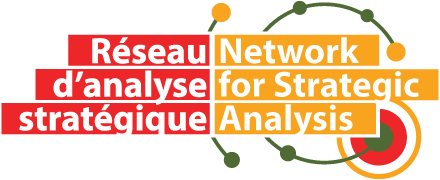Context
Rooted in the Black American feminist movement of the 1980s and 1990s, the notion of intersectionality refers to the intersection of an individual’s various social, physiological, and psychological identities that shape their perception of the environment and their life experience. In a desire to achieve parity and create a more inclusive society, the Canadian federal government committed in 1995, as part of the ratification of the Beijing Platform for Action, to implement a tool to advance gender equality in Canada (Canada, 2018a). In the early 2000s, the Canadian government launched the Gender-Based Analysis (GBA), a tool for taking gender differences into account in program and policy development and eliminating discrimination against women. In 2011, Status of Women Canada modernized its approach by introducing Gender-Based Analysis Plus (GBA+) to consider other identity factors along with gender (Canada, 2018b). Since 2016, memoranda to Cabinet and Treasury Board of Canada submissions have been required to include a GBA+. In addition, Status of Women Canada has developed an online course available to all to teach the basics of the tool and encourage public servants to apply GBA+ to their work. Furthermore, the Strategic Analysis Network is committed to using a similar approach to achieve its goals.
Implementation of a Diversity and Inclusion Strategy
Gender-based analysis plus (GBA+)
The GBA+ “is used to assess the potential impact of policies, programs, or initiatives on various sets of people-women, men, and others” (Canada, 2018). The tool proposes a series of questions to ask before undertaking any research or activity to challenge the researcher or analyst’s beliefs or biases. GBA+ includes seven distinct stages: identifying main issues, challenging assumptions, gathering facts through research and consultation, formulating options and recommendations, monitoring and evaluating, and communicating (Canada, 2018).
Some researchers have noted the limits of GBA+, including that the tool is primarily based on analysis according to gender and sex before it includes other identity factors. In addition, the various factors are approached as independent categories that are added to each other, which goes against the very essence of an intersectional approach (Hankivsky & Mussell, 2018; Maillé, 2018). Some have also noted that the long list of proposed questions often results in a box-ticking exercise rather than an honest reflection on the inclusion of minority groups. Finally, we add that the discriminating factors are all grouped under the category “identity factors,” without any distinction in their real nature.
While our Diversity and Inclusion Strategy builds on GBA+, it recognizes the limitations and challenges of applying the concept of intersectionality in practice. Nonetheless, our strategy breaks new ground by going beyond it to ensure that diversity and inclusion issues are present in the body of work of Strategic Analysis Network researchers and that it incorporates elements specific to traditionally underrepresented groups.
Our Approach to Diversity and Inclusion
Our strategy argues that individuals’ perceptions and life experiences are shaped by several factors that may be discriminatory. The importance and effect of these factors may vary depending on the context and the situation. Moreover, these factors do not operate independently but interact with each other and can contribute to unique forms of discrimination.
Our diversity and inclusion strategy differs from GBA+ in two ways:
- The starting point is not necessarily the gender – The starting point is not necessarily gender but varies depending on the nature of the project or initiative. For example, the main discriminating factor can be a physical handicap or even language in some cases, while gender can have a secondary influence.
- The strategy includes three types of discriminating factors –
- Identity factors – Factors that define an individual’s identity. Identity factors include gender, sexual identity, race, language, culture, ethnicity, sexual orientation, etc.
- Psycho-bio-neuro-physiological factors – Psychological, biological, neurological, or physiological factors that affect the way people perceive or experience the external environment. Psychological bio-neurophysiological factors include biological sex, age, physical or mental disability, physical appearance, learning styles, learning disorders, etc.
- Socio-economic factors – Features relating to the social or economic position of an individual that influences life experiences. Socio-economic factors include income, education, place of residence (rural vs. urban, region vs. centre, etc.), economic conditions in the community where an individual lives, employment status, marital status, family status, etc.



